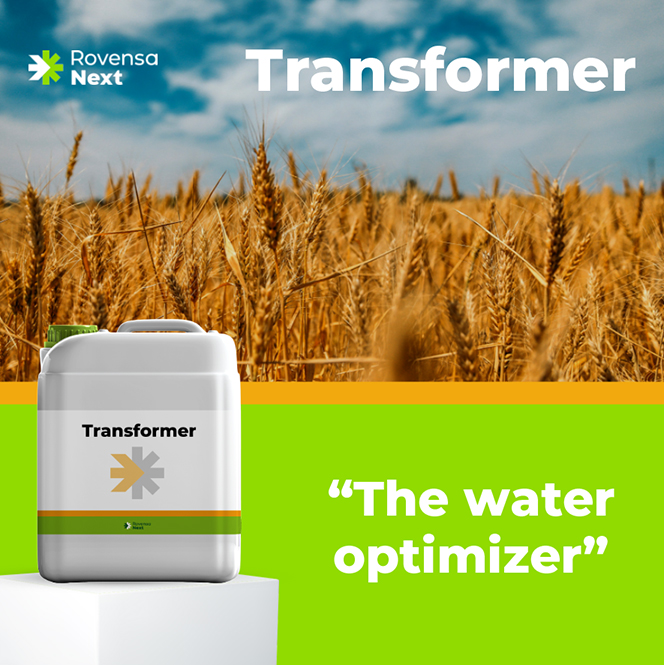Experts share biosolution strategies key to healthy soil and sustainable farming

Soil is more than just a place for plants to grow. It is a dynamic, living ecosystem that plays a pivotal role in plant health and crop yields, as well as providing the critical ecosystem services required for environmental sustainability. However, years of intensive farming practices, excessive chemical use, and ongoing soil degradation have depleted much agricultural land of essential nutrients and beneficial microbial life. To combat these issues, farmers around the globe are increasingly adopting biosolutions, nature-based strategies designed to enhance soil quality and promote sustainable farming without causing environmental harm.
Rovensa Next’s biosolutions portfolio encompasses a comprehensive range of biostimulants, adjuvants, biocontrol agents, and biofertilizers. These innovative solutions aim to restore soil fertility, boost plant resilience, reduce disease pressure and pest damage, and optimize nutrient use efficiency. Farmers can nurture healthier, more productive soils by integrating these solutions into cohesive agricultural strategies, thereby decreasing the reliance on traditional inputs and fostering long-term sustainability.

Boosting plant and soil resilience with biostimulants
The key is to implement an effective strategy to promote healthy soil that supports plant growth. This is something that Rovensa Next has been working on for years through dedicated research and development. However, many external factors influence this process, making it a complex and ongoing challenge. “Different types of environmental stress such as drought, nutrient depletion, and soil compaction can weaken crops. This is where biostimulants play a crucial role, helping plants to optimize growth and withstand adverse conditions,” explained Camila Levy, Global Agronomical R&D Manager at Rovensa Next.
Biostimulants are made up of natural compounds that can enhance plant metabolism, improve nutrient absorption, and strengthen root development. According to Camila Levy, “Humic and fulvic acids, such as Humistar WG and Turboroot, improve soil structure and increase the availability of essential nutrients, helping plants to absorb them more efficiently. Seaweed extracts stimulate root growth and enhance plant tolerance to extreme weather, especially when applied previously in heat waves and drought, for example. Protein hydrolysates and L-α free amino acids activate plant metabolism and have a curative effect on abiotic stress, leading to stronger development and better yields”.
Biostimulants do not only influence individual plants. They also support microbial life in the soil. A biologically active soil fosters beneficial microorganisms that cycle nutrients and decompose organic matter, further strengthening soil health. However, biostimulants and microbes must be efficiently delivered to plants and soil for them to work effectively. This brings us to another crucial aspect of biosolutions: disease management through biocontrol agents.
“One of the most significant challenges in agriculture is controlling soilborne diseases that reduce yields and have long-term effects on the productivity of infected fields”, explained Nordely Wright, Global Technology Characterization & Validation Manager at Rovensa Next. Traditionally, “chemical fungicides and pesticides were the go-to solution for these challenges, but their use can disrupt soil biodiversity and lead to the emergence of resistant pathogens. Biocontrol agents are a natural and sustainable alternative when used together in a strategic program approach,” affirmed Wright.
Beneficial microbes such as Trichoderma fungi and Bacillus bacteria colonize plant roots, establishing a protective barrier against pathogens. Trichoderma species, for example, act as natural antagonists to fungal diseases such as Fusarium and Pythium, effectively shielding crops from infection. Similarly, Bacillus subtilis produces antimicrobial compounds that suppress harmful bacteria, enhancing plant health without negatively affecting beneficial organisms.

Soil pest management using biocontrol strategies is extremely important in managing resistance by diversifying modes of action. Biosolutions for nematode control are greatly needed but are often complex to develop. “For very challenging pests such as nematodes, the use of bionematicides such as Nemend early in the season can reduce reliance on classic nematicide products,” stated the expert Nordely Wright.
While biocontrol agents protect plants, Rovensa Next envisions a paradigm shift in the use of biosolutions to maintain soil fertility and ensure crops receive the nutrients needed for optimal growth. This is where biofertilizers come into their own.
For decades, conventional farming has relied on synthetic fertilizers to replenish soil nutrients. However, in many cases, overuse has led to nutrient leaching, soil acidification, and water pollution, all of which threaten long-term soil fertility. Biofertilizers offer a sustainable solution by harnessing beneficial microorganisms to naturally restore nutrient levels.
In Rovensa Next “we work on various lines of research and product development, including nitrogen-fixing bacteria such as Rhizobium, used in our Atmo formulation, and Azospirillum, featured in Azzofix, which convert atmospheric nitrogen into a form that plants can absorb, reducing the reliance on synthetic nitrogen fertilizers. We also focus on phosphate-solubilizing microbes such as Pseudomonas, utilized in Pho’sUP, and Bacillus, used in Wiibio, which help unlock bound phosphorus in the soil, making it more readily available to plants,” said Camila Levy.
Another key player in soil health is mycorrhizal fungi, which form symbiotic relationships with plant roots. “These fungi extend root networks, improving water and nutrient uptake, while also enhancing soil structure by promoting the formation of stable aggregates. “This not only helps plants access nutrients more efficiently but also improves soil aeration and moisture retention, further supporting healthy crop growth”, stated Camila Levy.
However, these inputs must be applied effectively to maximize the benefits of biofertilizers, biostimulants, and biocontrol agents. This is where adjuvants play a critical role.

Although many farmers focus on applying biostimulants, biocontrol agents, and biofertilizers, they often overlook the importance of ensuring their proper distribution and retention. “The application of soil adjuvants such as Transformer and PK-Assist has an important role to play here. They can improve the efficiency of other soil inputs, overcoming soil limitations, such as poor infiltration, and ensuring biocontrol products reach their target”, explained Nordely Wright.
Rovensa Next’s strategies increase the efficacy of soil treatments by integrating adjuvants into their biosolutions program. “This is particularly important when applying microbial biocontrol agents, which must establish themselves in the root zone to protect the plant and outcompete harmful pathogens”, concluded Wright. In addition, Rovensa Next has promising formulations in the pipeline designed to further enhance soil health and optimize the performance of these microbial solutions in diverse field conditions.
No single solution can address all soil health challenges, but farmers today have access to a range of tools that together support every aspect of sustainable soil management. Farmers can apply a biosolution strategy based on their specific soil needs, with biostimulants to enhance plant strength, biocontrol agents to protect against diseases and nematodes, biofertilizers to replenish soil nutrients, and adjuvants to improve application efficiency.
Results show that sustainable soil management requires a holistic approach, combining biocontrol, biostimulants, adjuvants, and biofertilizers with regenerative farming practices.
In addition, techniques such as crop rotation, composting, and minimal tillage complement biosolutions by preserving soil structure, improving organic matter content, and reducing erosion. When combined, these strategies create a resilient soil ecosystem that can support plant growth while minimizing environmental impact.
As the demand for sustainable food production grows, biosolutions in agriculture present a viable path forward. Farmers who adopt these natural approaches not only enhance soil health and increase yields but also reduce their environmental footprint. The future of farming can be both productive and sustainable with healthy, biologically-active soils, thus ensuring food security for generations to come.